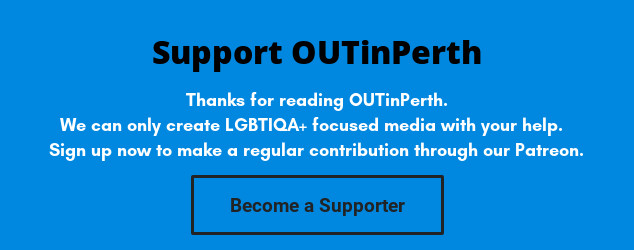
I guess because neither of us actually ever expected to attempt to have a child, we hadn’t given much thought, prior to now, about the technicalities of how to look after a baby. A pro-Googler with the impressive enthusiasm of someone at the start of a project they’ll not necessarily finish, I took it upon myself to ‘research’ our ‘options’. Partner assured me she’d ‘take my opinions into consideration’. Preliminary summary data supplied below:
- Breastfeeding. Partner and I being in general agreement that every breast should have a chance to live up to its potential, we figure we should give co-breastfeeding a crack. Armed with a vague recollection of that documentary where a person sat in a tub of milk and talked about male lactation for half an hour (backed up by Dr Karl so you know it’s legit), I had a look around. The available Australian literature around non-birth parent breastfeeding generally centres on adoptive parents and, predictably, takes a heteronormative approach. Consensus seems to suggest that taking a range of hormone supplements prior to the child being born, along with using a breast pump several times a day, gives a non-birth parent the best chance of being able to successfully breastfeed.
Induced lactation or co-breastfeeding offers the potential for the non-birth parent to bond with their baby in an intimate way usually reserved for the person who gave birth, it can help take the pressure off one or the other parent feeling responsible for meeting the nutritional needs of their baby, and raises the possibility of the birth parent being more free to undertake work outside the home sooner. Additionally, if the birth parent has trouble or does not wish to breastfeed, induced lactation offers another option for both providing milk to the baby and baby-parent bonding. Despite looking slightly fearful at the prospect of a house of pregnancy with added hormones, Partner is on board.
- Sign language. A no-brainer, and a long standing area of confusion by Partner that its use is not more widespread. Babies have the ability to understand and use sign language from a very young age, and it can be a powerful tool in communicating with a pre-verbal child. Google turns up varying lists of baby-friendly signs, based on Auslan. Not viewing this as sufficient a challenge, and being of the opinion that using signs when speaking is a good habit to get in to, I downloaded an Auslan app, and begin to practice.
I can report that I am so far able to request ‘more wine please’, and Partner is generally obliging.
- Elimination communication. Oh hai, my eco-hipster friends. I’ll take your cloth nappies and raise you a truly ‘eco’ (and some would suggest nightmarish) scenario: no nappies. Ever.
According to Wikipedia
Elimination communication (EC) is a practice in which a caregiver uses timing, signals, cues, and intuition to address an infant’s need to eliminate waste. Caregivers try to recognize and respond to babies’ bodily needs and enable them to urinate and defecate in an appropriate place (e.g. a toilet)… Some practitioners of EC begin soon after birth, the optimum window being zero to four months in terms of helping the baby get in tune with their elimination needs, although it can be started with babies of any age.
Dr Google, further, informs me that the use of nappies trains babies out of a survival mechanism associated with soiling themselves. To me, nappies have always seemed like a terrible thing, and this thinking holds great appeal. Bolstered by the knowledge that our thus-far imaginary child will in no time at all be conversant in sign language covering their bodily functions and fetching wine, I’m keen to try this out. Partner is not sold.
Partner – ‘Where will you take it? You can’t hold a tiny baby over the toilet’
Me – ‘I know that, most people use a sink. Look at the article!’
Partner – ‘That’s revolting’
Me – ‘Calm down, we’d use the bathroom or laundry, not the kitchen. We’re not animals.’
In a strategic retreat, I’ve agreed to cloth nappies for when we go out. This will prove unnecessary, as I don’t plan to leave the house for two years.
You see, I read this thing online…..
This article is part of a series from a local community member on their journey to becoming a parent. You can read more here.






